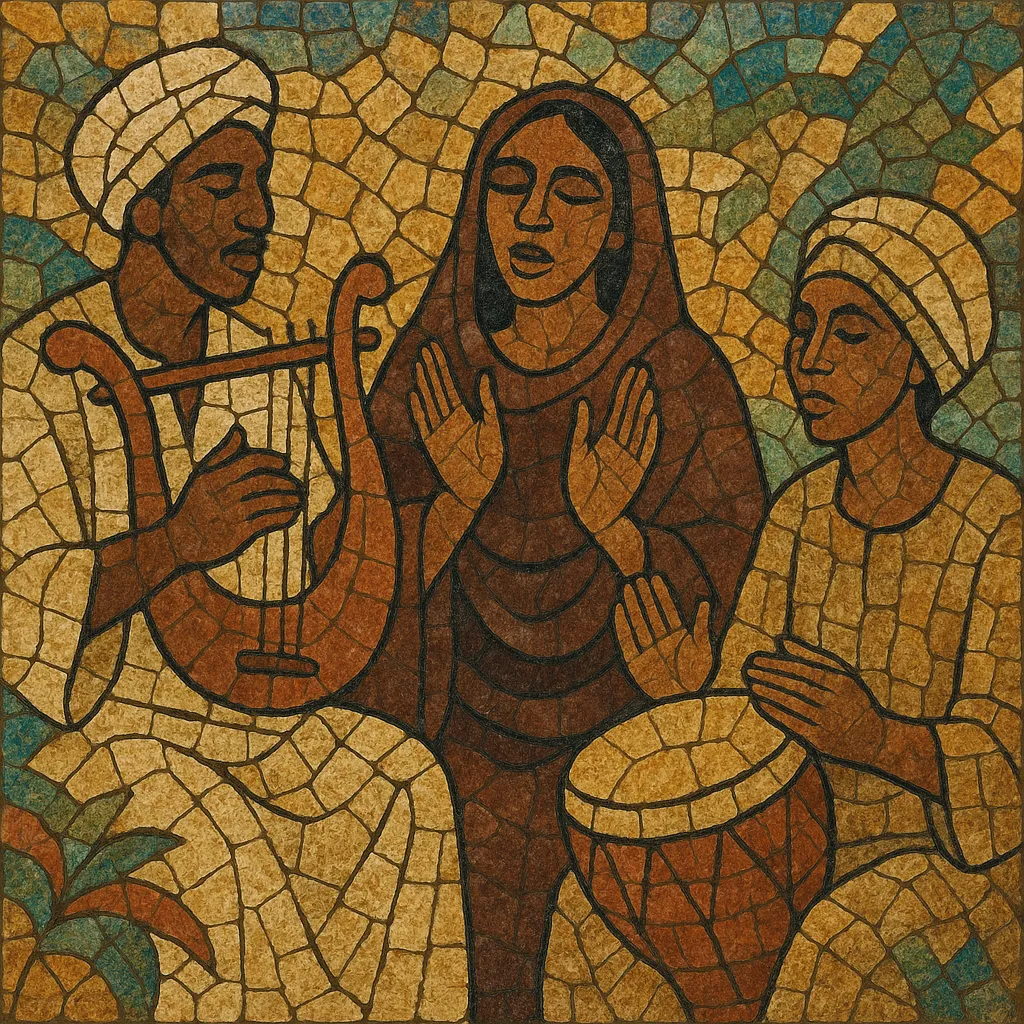Beja music is the traditional music of the Beja (Bedawiyet/To-Bedawie) people of the Red Sea Hills, centered in eastern Sudan and extending into Eritrea and southern Egypt.
It features distinctive lyre-based accompaniment (especially the kissar/tanbūra), handclapping, and frame drums, supporting solo or call‑and‑response vocals in the Bedawiyet language. Melodies often move within narrow, modal contours influenced by the wider Afro‑Arab soundworld, while rhythms alternate between lively duple feels (2/4) and swaying compound meters (6/8) suited to social dance and wedding ceremonies.
Themes of desert life, camel caravans, courtship, praise, and communal identity are common, and performances are marked by ululation and participatory clapping that create a strong communal atmosphere.
Beja music arises from the pastoral nomadic culture of the Beja people, who have inhabited the Red Sea Hills for centuries. Much of the tradition predates written documentation, but the core ensemble—voice, lyre (kissar/tanbūra), and hand percussion—coalesced in its present form by the 19th century as caravan networks and coastal towns (notably Suakin and later Port Sudan) facilitated cultural exchange.
From the medieval period onward, the Islamization of the region brought devotional poetry and Sufi aesthetics that blended with local song traditions. While Beja music retained its indigenous poetics and dance functions (weddings, communal feasts), it absorbed modal color and performance practices from Arabic musical life along the Nile and Red Sea littoral. Spirit-possession and healing ceremonies found across the region (often tanbūra/kissar-led) also helped preserve the lyre’s centrality.
During the mid‑1900s, radio (notably Omdurman) and cassettes began to circulate Beja songs beyond the Red Sea Hills. Migration to Port Sudan and Khartoum increased the presence of Beja performers in urban settings, where lyre‑and‑drum formats interfaced with oud, violin, and small amplified bands. Despite intermittent marginalization, wedding troupes, cultural ensembles, and local stars kept the repertoire active.
In the 2000s–2020s, archival reissues and new recordings drew international attention to Beja sounds. Artists and bands from Port Sudan foregrounded Bedawiyet lyrics and lyre‑centric grooves, sometimes with electric instruments, presenting a modern yet faithful take. This revival has highlighted the Beja’s role within the wider tapestry of Northeastern African and Afro‑Arab music.


